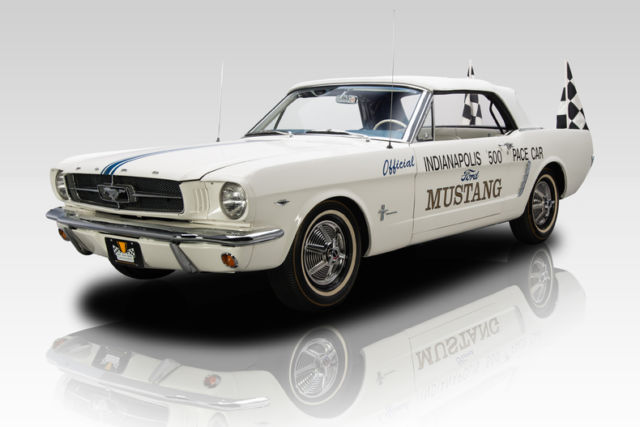1 of 1 Holman Moody Modified Mustang Convertible Indy 500 Pace Car
- Condition: Used
- Make: Ford
- Model: Mustang
- SubModel: Pace Car
- Type: Convertible
- Doors: 2
- Year: 1964
- Mileage: 3,376
- Color: White
- Engine size: 289 V8
- Transmission: Manual
- Interior color: Blue
- Vehicle Title: Clear
- Interested?
1964 Ford Mustang Pace Car Description
No matter how impressive a specific collector car is, there's no such thing as a perfect investment. The very nature of acquiring gains via equity is inherently risky depending on the factors and history affecting an asset. With that in mind, the idea is to find a classic which minimizes risk as much as possible. From an investment mindset, low risk is the major selling point of this 1 of 1 1964.5 Mustang. Never mind the fact that the car was assembled during the first hour of Mustang production. The fact that the car was 1 of 3 convertibles sent to Holman Moody for major modifications and subsequent pace car duty is beside the point. Just because the car was the only Ford Mustang to pace the 1964 Indianapolis 500 and, in the process, became the most modeled Ford in history doesn't mean all risk is moot. And, just because the car is a fanatically documented piece of automobilia that was driven by Ford Motor Company heir Benson Ford doesn't make it a risk-less investment. No, what matters most is that the combination of these monumental milestones provides potential buyers with one of the safest and most secure automotive assets on the planet. If you're shopping for a sure-fire winner, this, "the most significant historic Mustang in the world", should be the FIRST classic you're willing to put money on!
"The most significant historic Mustang in the world" is a tall claim but, once you hear this convertible's incredible story, you'll whole-heartedly agree. In 1964, Lee Iacocca was preparing a massive marketing blitz for Ford's newly revealed pony car. Since the company's Falcon compact had already secured pace car duties for the 1964 Indy 500, Iacocca made his newest muse a last minute substitution. During the first hour of Mustang production, three convertibles were assembled with a combination of Falcon and 1963-coded Ford parts. And, as soon as those cars rolled off the Dearborn assembly line, they were shipped to legendary Charlotte tuner Holman Moody. In order to pace 'the great race' the cars needed to safely travel 140 miles per hour. So, the first thing Holman Moody did was, with Ford's blessing, replace the cars' stock 260 powerplants with detuned 289s that were being developed for the GT40 Le Mans racer. Next came a lowered and stiffened suspension. And finally, chrome marine handles were, along with custom flag stanchions, added for both form and function.
Unfortunately, Iacocca's grand but hasty plan encountered one major problem: Holman Moody only had time to complete two of the cars. When this Mustang and its counterpart were shipped to Indy, Mustang number three, being essentially a prototype, was scrapped. And when the two completed cars arrived at the brickyard, one immediately experienced mechanical failure. That meant the convertible you see here is the sole Mustang to, at the hands of Benson Ford, pace the 1964 Indianapolis 500. After a big day of speed and photo ops, the drop-top was unceremoniously returned to Ford. Ford, ever the supporter of motorsports, passed it to Florida's Sebring International Raceway. Sebring made good use of the Mustang as a parade car and driver loaner for a solid 11 seasons. Then, in 1974, this significant piece of Dearborn history was locked in a raceway storage facility and all but forgotten.
Fast forward to the early 90s when a Mustang Club of America official learned that a true gem of Mustang history had been stored roughly 120 miles from his house for almost 20 years. After talks with the owner of the track, he became the first, and only, private owner of the car. And, circa 1991, he began a fully documented, NOS restoration that would eventually earn the convertible a perfect score in MCA's exclusive Thoroughbred Class. As far as labor was concerned, the restoration wasn't too difficult, as the car was incredibly solid when purchased. In fact, 95% of its parts, some of them one-of-a-kind originals, were reconditioned and bolted right back up using original and NOS hardware. And the 5% that couldn't be reused was carefully replaced with either NOS or completely custom components. In the final phase of the project, the car's all-original body and frame were walnut-blasted to remove long-dead pigment. And correct, single-stage Ford Fleet White was laid under a metallic blue stripe, Indy tags and authentic pace car decals.
It should be pretty obvious by now that this classic is all about sweating the details. And, sporting a look that's 100% true to how it rolled around the brickyard, the car presents a finished, high quality appearance which goes far beyond nice paint. At the front its solid body, a bulls eye grille hangs a rechromed horse emblem between NOS headlights, rechromed parking lamps and an original, rechromed bumper. At the top of that grille, original '63 and '64-coded glass rides between original wipers, rechromed trim and a never-folded, NOS canvas roof. At the sides of that glass, traditionally sculpted sheetmetal lays the groundwork for stainless cove trim, patriotic Mustang emblems and old school door handles. And at the back of that sheetmetal, peaked fenders and a second rechromed bumper frame rechromed tail lights, a highly detailed fuel filler and custom-reproduced stanchions.
Developed for the GT40 campaign, labeled "experimental" and, as far as anyone knows, the only factory-installed Mustang mill of its kind, this convertible's 450 horsepower V8 is a literal fairy-tale of Ford performance. At the top of the balanced, blueprinted and fully de-burred block, a gold, correctly decaled air cleaner feeds wind in to a correct Autolite 4-barrel that's clamped onto fresh steel fluid lines. At the base of that carburetor, a cast iron Ford intake rides between ported and polished Hi-Po heads, which are capped with bright gold valve covers. Below those heads, forged pistons and a drop forged crank combine with solid lifters and a C3 cam to create stout 10.5 to 1 compression. At the front of that cam, a reliable points distributor sequences fire through NOS, date-correct plug wires, which snake around correct Fairlane exhaust manifolds. And at the leading edge of those manifolds, NOS V-belts spin correct ancillaries behind a correct Galaxie radiator. Aesthetically, the jet black small block sits in a completely restored engine bay which features factory decals and smooth, Satin Black paint. And nice pieces like NOS plugs, an actual 'tar top' battery and tri-angulated, Holman Moody-installed bracing provide unmatched authenticity.
That engine would certainly achieve the speeds required to pace Indy, but could the car's factory chassis efficiently apply all its power to the ground? The pros at Holman Moody seemed to think so, as long as they made a few small mods. Trot this Mustang to a lift and you'll find original, correctly oversprayed floors that are highlighted by factory decals, correct paint marks and a sprinkling of performance hardware. Behind the hot 289, an "experimental" Toploader 4-speed, which wears a familiar C3 bellhousing, turns a narrowed '59 Galaxie limited-slip around 3.25 gears. At the ends of the car, a fully restored suspension employs a larger sway bar, shortened coils, de-arched leafs and original, mismatched Koni shocks. At the corners of the car, heavy duty, Holman Moody-tweaked drums provide firm, fade-free stops. Stomp the 'go pedal' and the aforementioned manifolds hurl spent gases in to an NOS, resonator-free exhaust system that screams through a date-coded cross-flow muffler. Power meets the pavement thanks to painted steel wheels, which spin NOS 7.75-14 Firestone 500 goldlines around faux stainless knock-offs. And everything under this Ford, from its steel fuel tank to its road race oil pan, is clean, correct and ready to show!
Open this incredible time capsule's doors and you'll find a Blue, Standard interior that's clean, functional and attractive. The car's factory bench and bucket seats wear NOS covers between correct red lap belts. In front of those seats, a correctly painted dash hangs a full assortment of rebuilt gauges above a correct Motorola 2-way radio. Below that dash, a stylish chrome shifter rides on NOS carpet that's framed by a correct '63 Falcon clutch pedal and original door sills. Opposite that shifter, correctly painted side panels seat correct red armrests between chrome door handles, chrome window cranks and marine grab handles thoughtfully fitted by Holman Moody. Above those panels, a correctly decaled mirror and factory power top frame a third marine grab handle. In front of the driver, a white steering wheel twists around a traditional Mustang centerpiece. And behind the passengers, a fully restored trunk features a fifth Firestone 500 goldline.
Featured in countless automotive publications, and recently appraised at $1.25 million by a museum curator, this exclusive Ford has plenty of easily accessible provenance. That said; our sale does include a variety of significant items. We have two letters from the former owner of Sebring Raceway (one notarized) authenticating the car's history. We have a jump drive that contains vintage pictures, vintage articles and a wealth of research and information. We have copies of two of the aforementioned features. We have a short summary story, for display purposes. And we have two die-cast models of the car.
So, there you have it: one of Ford's most storied muscle cars ready to begin the next chapter in its all-important role of preserving irreplaceable history. This blue chip pony has all the hardware, documentation and prestige to ensure its status as "the most significant historic Mustang in the world". And if you're a serious collector who's shopping for a unique and impressive investment that's virtually guaranteed to gain, it's a sure-fire winner!
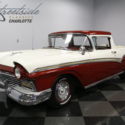 HOLMAN MOODY 406 V8 W/ 3 DEUCES, 4SPD, RARE, VERSATILE, SLEEPER/CRUISER!
HOLMAN MOODY 406 V8 W/ 3 DEUCES, 4SPD, RARE, VERSATILE, SLEEPER/CRUISER!
Mileage: 7,101
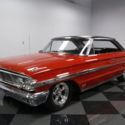 FACTORY RACER, R-CODE 427 V8, 4 SPD, HOLMAN-MOODY BUILT, 480 REAR WHEEL HP, COOL
FACTORY RACER, R-CODE 427 V8, 4 SPD, HOLMAN-MOODY BUILT, 480 REAR WHEEL HP, COOL
Mileage: 33,981
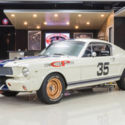 GT350R Recreation! Ford 302 V8, Toploader 4-Speed, Carroll Shelby / Holman Moody
GT350R Recreation! Ford 302 V8, Toploader 4-Speed, Carroll Shelby / Holman Moody
Mileage: 421
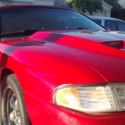 1994 Mustang Cobra Convertible Indy Pace Car
1994 Mustang Cobra Convertible Indy Pace Car
Mileage: 100,013
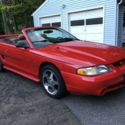 1994 MUSTANG COBRA CONVERTIBLE INDY 500 PACE CAR EDITION
1994 MUSTANG COBRA CONVERTIBLE INDY 500 PACE CAR EDITION
Mileage: 183,315
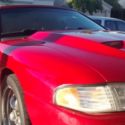 1994 Mustang Cobra Convertible Indy Pace Car - No Reserve!!
1994 Mustang Cobra Convertible Indy Pace Car - No Reserve!!
Mileage: 100,013
 1994 Ford Mustang Indy 500 Pace Car Convertible 32K Original Miles
1994 Ford Mustang Indy 500 Pace Car Convertible 32K Original Miles
Mileage: 32,248
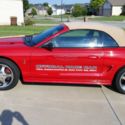 1994 Ford Mustang SVT Cobra Convertible Indy Pace Car 2-Door 5.0L
1994 Ford Mustang SVT Cobra Convertible Indy Pace Car 2-Door 5.0L
Mileage: 100,878
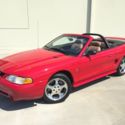 1994 Ford Mustang Cobra 5.0 SVT Indy Pace Car Convertible 15K Actual Miles
1994 Ford Mustang Cobra 5.0 SVT Indy Pace Car Convertible 15K Actual Miles
Mileage: 14,650
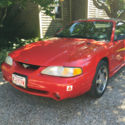 1994 Ford Mustang SVT Cobra Convertible 2-Door 5.0L Indy Pace Car 303/1000
1994 Ford Mustang SVT Cobra Convertible 2-Door 5.0L Indy Pace Car 303/1000
Mileage: 14,277
